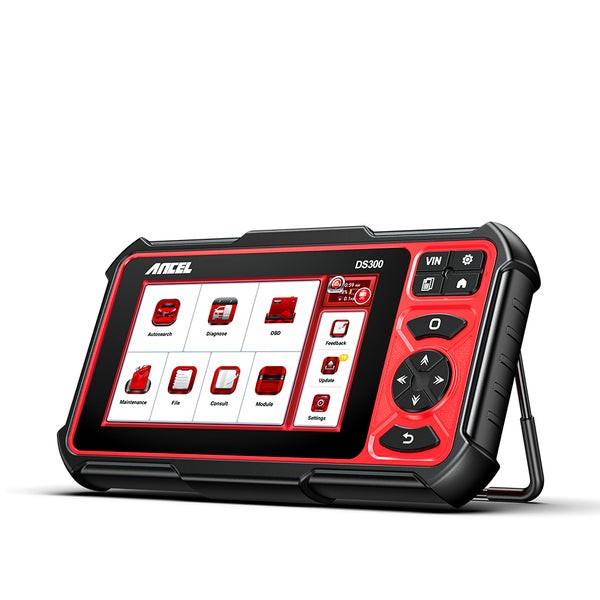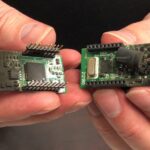Dealing with a stubborn check engine light? It might be a permanent OBD2 code. These codes, also known as Diagnostic Trouble Codes (DTCs), indicate a persistent issue within your vehicle’s system. Unlike temporary codes, they don’t vanish after a simple fix and require a more involved approach to erase. This guide provides a step-by-step walkthrough on How To Erase A Permanent Code Obd2.
Understanding Permanent OBD2 Codes
Permanent DTCs are logged by your car’s Engine Control Unit (ECU) when a significant problem affecting emissions or performance is detected. They serve as a record for technicians and ensure serious issues aren’t overlooked. These codes remain stored in the ECU’s memory even after the initial problem is resolved, differentiating them from temporary codes that clear after a certain number of drive cycles without reoccurring faults. Disconnecting the battery or using a basic code reader often won’t erase these permanent codes.
Steps to Erase a Permanent Code OBD2
1. Diagnose and Repair the Underlying Issue
The first and most crucial step is addressing the root cause of the code. Permanent codes aren’t arbitrary; they signal a genuine problem. Utilize a high-quality OBD2 scanner to pinpoint the specific code and its corresponding meaning. Consult repair manuals or online resources to understand the diagnosis and perform the necessary repairs or component replacements.
 Car Diagnostic Tool
Car Diagnostic Tool
2. Perform a Drive Cycle
After resolving the mechanical issue, a drive cycle is essential to allow the ECU to re-evaluate the system. A drive cycle consists of specific driving conditions, such as idling, acceleration, deceleration, and maintaining various speeds, designed to trigger specific monitoring systems within the ECU. Consult your vehicle’s owner’s manual or reputable online sources for the correct drive cycle procedure for your specific make and model. Successful completion often leads to the automatic clearing of the permanent code if the problem is genuinely fixed.
3. Utilize an Advanced OBD2 Scanner
If the drive cycle doesn’t erase the code, an advanced OBD2 scanner with specific functionalities is required. Look for a scanner capable of accessing Mode $04 (clear emission-related diagnostic information) and Mode $0A (permanent DTCs). Connect the scanner to the OBD2 port (usually located under the dashboard), turn the ignition to the “ON” position without starting the engine, and follow the scanner’s instructions to clear the permanent codes. Some scanners may require additional steps or another drive cycle after clearing.
4. Consider ECU Software Updates
Occasionally, outdated ECU software can prevent a permanent code from being erased. Manufacturers release updates to address bugs, improve performance, and enhance diagnostic capabilities. Check the manufacturer’s website or consult a dealership to see if any ECU updates are available for your vehicle. Installing the latest software version might resolve underlying issues and allow for successful code clearing.
5. ECU Reset (Last Resort)
As a last resort, resetting the ECU can potentially erase a persistent permanent code. This process involves disconnecting the vehicle’s battery for an extended period (usually 15-30 minutes) to clear the ECU’s memory. Be aware that this will reset all learned settings, including radio presets and personalized vehicle configurations. After reconnecting the battery, a drive cycle is necessary for the ECU to relearn these settings.
6. Seek Professional Assistance
If all else fails, consult a qualified mechanic. They possess the expertise and specialized tools to diagnose complex issues and utilize advanced diagnostic equipment to erase stubborn permanent codes.
The Importance of Erasing Permanent OBD2 Codes
Clearing permanent codes is crucial for several reasons:
- Passing Emissions Tests: Permanent codes related to emissions systems will cause failure during testing.
- Maintaining Fuel Efficiency: Unresolved issues indicated by permanent codes can negatively impact fuel economy.
- Preventing Further Damage: Ignoring persistent codes can lead to more severe and costly engine or system damage.
Preventing Permanent OBD2 Codes
Proactive measures can minimize the occurrence of permanent codes:
- Adhere to Regular Maintenance: Follow the manufacturer’s recommended maintenance schedule.
- Address Issues Promptly: Repair any car problems as soon as they arise to prevent them from becoming persistent.
- Use Quality Parts: Opt for Original Equipment Manufacturer (OEM) or high-quality aftermarket parts for repairs.
Conclusion
Erasing a permanent OBD2 code requires a methodical approach, from diagnosing and fixing the underlying problem to utilizing advanced diagnostic tools and potentially performing an ECU reset. Understanding the significance of these codes and taking proactive steps to address them is vital for maintaining your vehicle’s health, performance, and compliance with emission standards. If you’re unsure about any step, consult a qualified mechanic to ensure proper diagnosis and repair.

